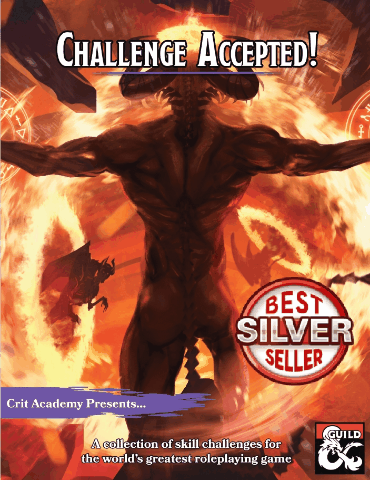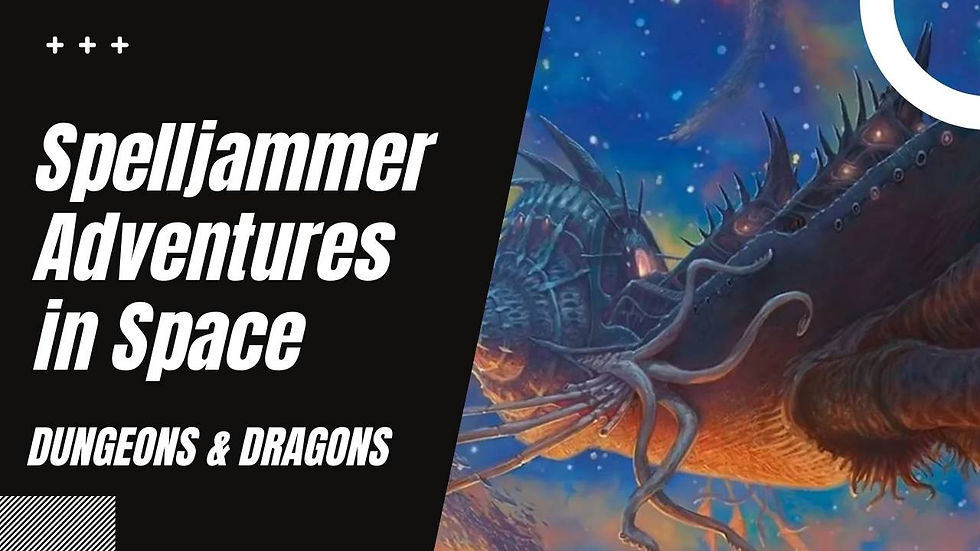Villainous Variety | Dungeons and Dragons
- Justin Handlin

- Jun 18, 2022
- 7 min read

How do we create fun and interesting villains in our stories?
Villains, every story needs one. The heroes of a Dungeons & Dragons campaign are likely to face dozens of villains before the campaign runs its course.
Coming up with that many memorable villains can challenge any DM’s imagination. To help with that, we offer this extensive list of villainous attributes and characteristics.
The purpose of these lists is not to roll out a ready-to-play villain, although they could be used that way.
They can steer your creativity onto pathways that you wouldn’t take otherwise. We all fall into creative patterns. Allowing a chance to play a role in the creative process helps to break those patterns and produces ideas that we’d never turn out purely on our own.
Our D&D villains come in three basic flavors. The first two are universal; the third is typically found only in fantasy tales. At some point, you need to decide which type of villain you’re dealing with. That might happen at the beginning of the design process, in the middle, or at the end. Whatever works best in your head is the right way for you to decide.
Conflicting Goals
This villain is not necessarily evil, but his or her goals or views conflict with those of the heroes or with the aims of society at large. We consider Copernicus, for example, to be a hero for showing us the truth that Earth is not the center of the universe. But in his time and place, when the Church was assailed by Reformationists and the world was crowded with people spouting crackpot cosmological theories, it’s easy to see how those who fervently believed in Ptolemy’s astronomy would see Copernicus’s ideas as a dire assault on faith and reason. Alternatively, this villain might be someone who could be a hero in the right time and place, but put him or her in a different situation and virtues become vices. Oliver Cromwell’s faith and resolve drove his army to victory after victory during the English Civil War, but just a few years later those same qualities produced atrocities in Ireland that are cursed to this day.
Hunger
This villain type is more evil and less redeemable than the first, but still recognizably one of us. Though, hunger could drive an innocent to do something they wouldn’t normally do. His or her villainy arises from a deep physical or psychological need that can’t be fulfilled. At some point, these characters swore to sate that hunger no matter what the cost, and their feet were set irrevocably on the path to evil. Clearly, something is wrong with these villains; they make choices that no normal person would make. But by understanding where the villain came from, one can understand his or her choices, even while those choices remain horrific and inexcusable. Vampires in the mold of Louis de Pointe du Lac are an obvious example; the wight seeking to restore its lost soul or the resurrected mummy of Imhotep murdering innocents to revive its eons-dead lover are further cases in point.
Pure, Concentrated Evil
This mode isn’t unique to fantasy, but it plays better in the swords & sorcery genre than anywhere else. In most fantasy settings, absolute evil is real. Evil is not just an ethical notion; it has arms and legs, eyes and ears, and it walks and eats and gets wet in the rain much like anyone else. In a setting like that, some villains willingly choose the path of evil because they’re just twisted. They were born bad: naturally sick, sadistic, man-eating, evil-worshiping nightmares. Maybe they’re human, maybe they’re bestial, maybe they’re something much worse. Unlike other villains, DMs need feel no pressure to humanize these monsters or to fuel the players’ empathy toward them. The goal is not to make such villains believable but to make them larger than life. Melodrama plays well in fantasy and even more so in roleplaying games, and few villains do melodrama as well as those brewed from pure, concentrated evil. Players can hate this villain without guilt. Seeing the world through his or her eyes would be a disturbing experience, not an empathetic one. Most D&D adventures end with the characters killing the villain; everyone can feel good about striking the lethal blow against one of these fiends. Darth Vader (before anything was known about his life as Anakin Skywalker), Thulsa Doom, and Voldemort are prime examples of this villain.
Further Variety
What follows are additional things to consider if you wish to ensure your villains have lots of variety.
Monster Type
How about an ooze? At first glance, the deck appears to be stacked against such creatures ever taking a lead role, but how do we know that their tiny Intelligence scores don’t conceal thought processes so alien we can’t comprehend them? Consider such a creature grown to enormous size and loose in a city’s sewers: able to seep through any opening, to attack through any grate or drain, to survive on whatever food washes down from above. Give it telepathy and the ability to mimic other creatures and you’d have a truly frightening and memorable villain.
-Dragon Magazine 429 by Steve Winter-
Save time and effort by jumping into the game with already fleshed-out locations, encounters, maps, abilities, and stat blocks. Being a DM is hard. Why not let us do the heavy lifting so you can have a great time at the table.
Monster Variant: Aetherstone Miner
Origin Statblock: Bandit Captain.
Lost Features: Scimitar, Parry (Swap Dex & Str)
New Features:
Skill: Persuasion +4
Darkvision 120 ft.
Devil's Sight: Magical darkness doesn’t impede the miner's
darkvision.
Dwarven Resilience. The miner has advantage on saving throws against poison, and has resistance against poison damage.
Resurgence 15: When the miner takes damage from a single attack greater than its resurgence threshold, its flesh becomes hard as stone. For up to 1 minute (as if concentrating on a spell) the miner has immunity to piercing, and slashing from nonmagical attacks that aren't adamantine. Additionally, the miner gains vulnerability to thunder damage.
Spellcasting:
At will: mold earth (XGtE)
1/day each: meld into stone, shape stone
War Pick. Melee Weapon Attack: +5 to hit, reach 5 ft., one target. Hit: 7 (1d8 + 3). Additionally, if the target is a creature that is concentrating on a spell, the creature has disadvantage on its Constitution saving throw to maintain concentration.
Cutting Parry. When a creature attacks the miner with a melee weapon, it may use its reaction to catch their weapon in the hook of its war pick, parrying their attack while the hooked war pick sinks into them. The miner makes an attack roll with its war pick. If the result of this roll equals or exceeds their attack roll, their attack misses, and the miner rolls normal weapon damage.
Encounter: Lake of Acid
Henila, a small town wizard put out a call for adventurers. A rift to the Shadowfel opened up near the town, causing a flood of necrotic creatures and spilling disease and poison into the lakes. The characters must purify the lake and deal with the black puddings that have spilled out of the rift. The lake has several run offs, and if the characters aren’t able to control it, the putrid mess will spread to other towns. The characters must decide what is the priority. Slay the alien creatures first, heal the sick and dying, or quarantine off each of the lake's runoff streams before they reach any more settlements? Each option will lead to a potential unpleasant disaster. It can only be controlled. The characters are damned if they do, damned if they don’t.
Magic Item: Ghost Oil
Potion, Rare
This dark ale smells of musty soil, but it has a hint of something rich and inviting, but turns into a soft blue flame when poured. The oil can cover a Medium or smaller creature, along with the equipment it’s wearing and carrying (one additional vial is required for each size category above Medium). Applying the oil takes 10 minutes. The creature gains the following benefits for 1 hour.
Fly. The creature gains a fly speed equal to its walk speed and it can hover.
Incorporeal Movement. The creature can move through other creatures and objects as if they were difficult terrain. It takes 5 (1d10) force damage if it ends its turn inside an object.
Withering Touch. When the creature makes an attack, it deals an additional 7 (2d6) necrotic damage.
Dungeon Master Tip: Sometimes, It’s Just the DM’s Fault
“The truth of it is, sometimes when something goes wrong in a game it’s the DM’s fault. Some things that DMs do are just plain wrong. We all make mistakes, and we all have our shortcomings. If you’re a DM and you don't think you have some failings, you might want to reexamine your style and approach, or just ask your players.
Everyone has a few things they can improve on, or foibles they could try to get rid of. But sometimes, particularly for DMs that have been DMing for a long time, we grow blind to our own deficiencies.”
- Monty Cook, Dungeon Magazine 136 -
Few examples: Starting the game at 7pm when it was scheduled for 6 pm.
If players are distracted by TV or other things going on, you’re likely boring them.
If you fail to take challenges seriously, the players may believe you’ll never let anything happen to them.
If your story and campaign arc aren’t of interest to the players.
If the players are unsure of what to do next.
Minimum hygiene is required…
Player Tip: Don’t be a Dick: Favored of the All-Father
Dwarves know Moradin as the All-Father because he crafted all dwarves. Yet Moradin has made many things in his immortal lifetime. Some were stronger and some more beautiful, but none found so much favor in Moradin’s bejeweled heart as his dwarves. The dwarves were the first of Moradin’s makings that made him proud not only of his own skill, but proud to know them and prouder still that they prayed to him.
Dwarves honor their creator through prayer, but also through proud traditions. Knowledge and customs passed down through the generations almost unchanged from the Dawn Age guide dwarves through the uncertain present and into the unknowable future with the confidence that what has been will be. The past lives on in the present through the deeds of honorable dwarves. So shall it always be as long as any of the favored of the All-Father draw breath.
- Matt Sernett - Dragon Magazine 391-

Villains create conflict. Conflict creates the call to action every story needs. Without a villain, there’s no story!
Villains Next Door is a collection of bad guys for fantasy games: the book contains dozens of ready-to-use villains, each unique and fully realized.
Though created with Fifth Edition in mind, each villain is designed to be used in any RPG system. Kabouter Games assembled a crack team of diverse international indie designers to create Villains Next Door just for you!
Winner: dmteoultimus
Didn’t win? Np, head to www.critacademy.com and subscribe for your chance to win!
Didn't win? Sign up for our Newsletter and be entered to win our weekly giveaway.
Thank you for reading our blog. If you enjoy the content and want to support us, visit our store or follow us on social media, join us on discord, youtube, and leave us a review.
Keep your blades sharp and spells prepared heroes!
*Crit Academy is an Affiliate of Amazon, DMsguild and DriveThruRPG*
















Comments